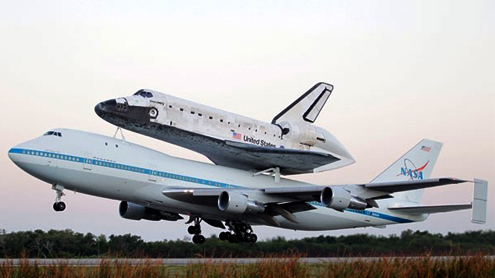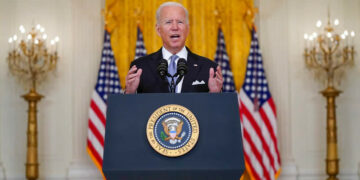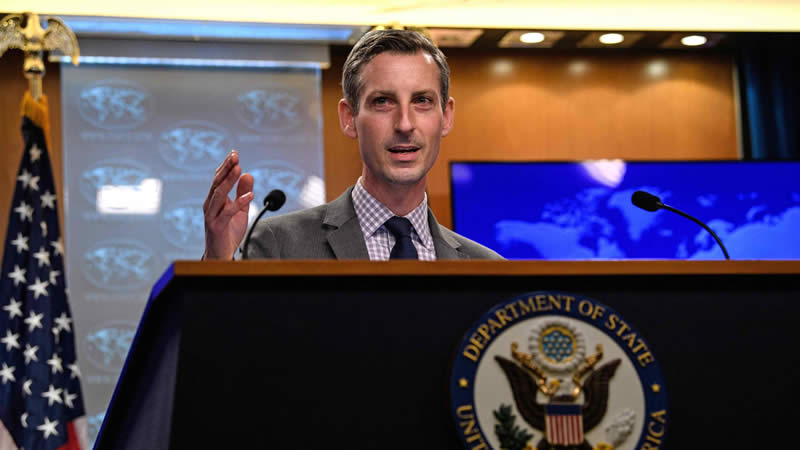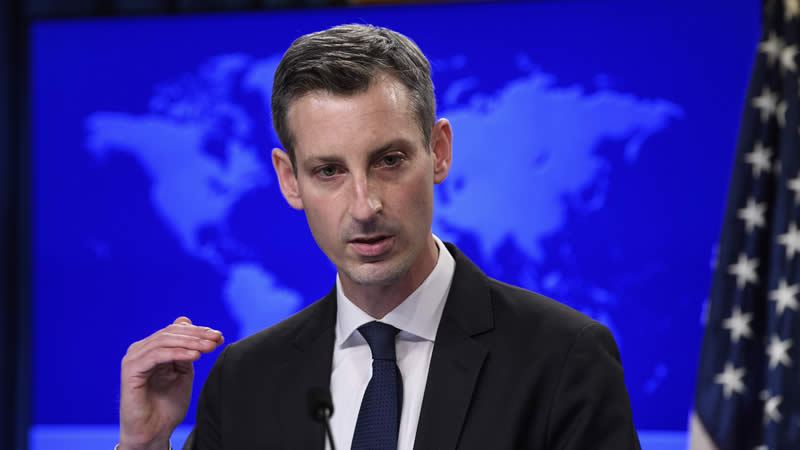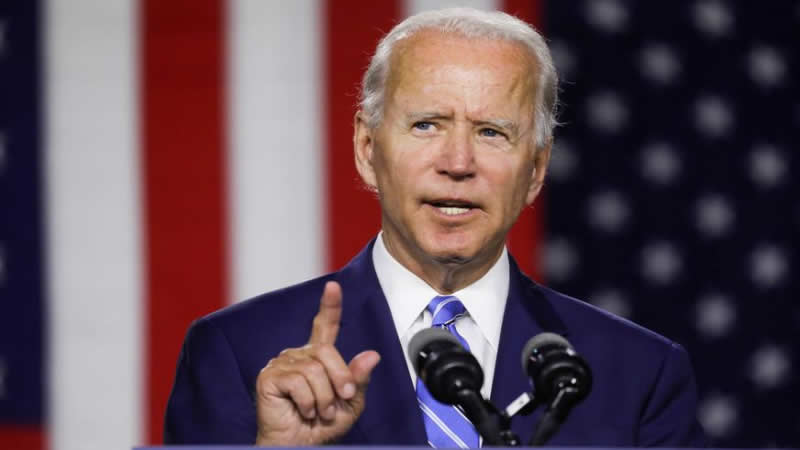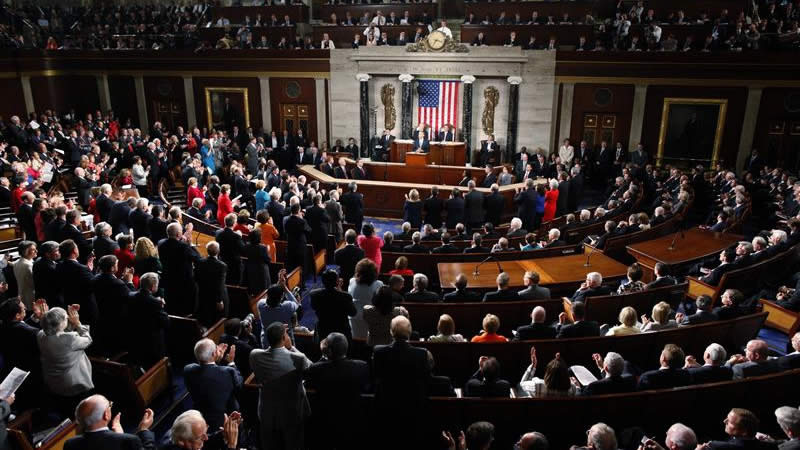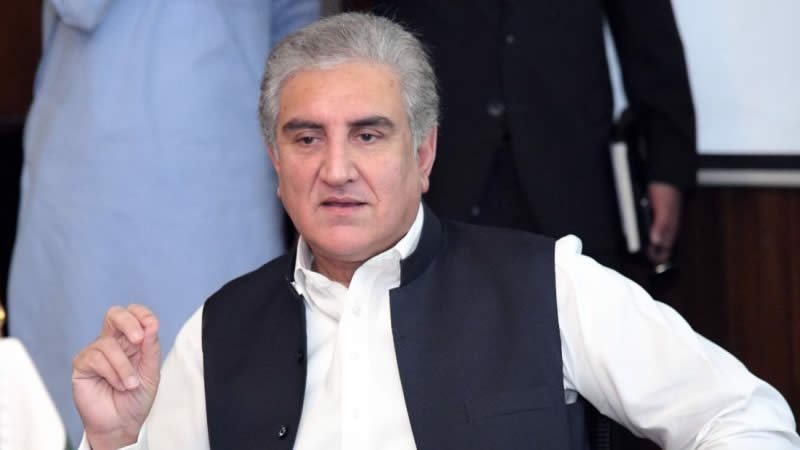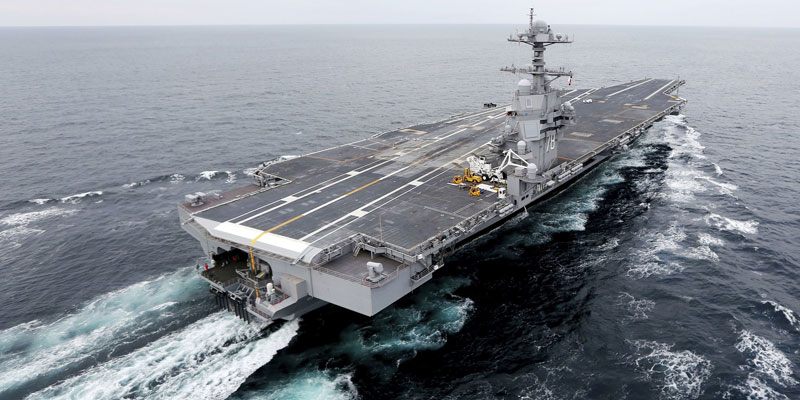 The space shuttle Discovery soared over the Washington Monument, the White House and the Capitol in a high-flying salute to the nation’s capital on Tuesday.The world’s most traveled spaceship, hitching a ride on top a Boeing 747 jet, took a couple of leisurely spins at an easy-to-spot 1,500 feet (450 meters) above Washington after a flight from Cape Canaveral, Florida.
The space shuttle Discovery soared over the Washington Monument, the White House and the Capitol in a high-flying salute to the nation’s capital on Tuesday.The world’s most traveled spaceship, hitching a ride on top a Boeing 747 jet, took a couple of leisurely spins at an easy-to-spot 1,500 feet (450 meters) above Washington after a flight from Cape Canaveral, Florida.
Thousands packed the National Mall to watch the pair swoop by.“Look at that — that thing is mammoth,” said Terri Jacobsen of Bethesda, Maryland. She brought her 12-year-old home-schooled son to the mall to watch the flyover The shuttle-jet combo was set to land at Dulles International Airport. On Thursday, it will be towed to its permanent installation at the Smithsonian’s annex in northern Virginia.Discovery departed Florida’s Kennedy Space Centre at daybreak. Nearly 2,000 people — former shuttle workers, VIPs, tourists and journalists — gathered along the old shuttle landing strip to see Discovery off. A cheer went up as the plane taxied down the runway and soared into a clear sky.The plane and shuttle headed south and made one last flight over the beaches of Cape Canaveral — thousands jammed the shore for a glimpse of Discovery — then returned to the space center in a final salute. Cheers erupted once more as the pair came in low over the runway it had left 20 minutes earlier and finally turned toward the north.
Discovery — the fleet leader with 39 orbital missions — is the first of the three retired space shuttles to head to a museum. It will go on display at Dulles International Airport in Virginia, taking the place of the shuttle prototype Enterprise. The Enterprise will go to New York City.Endeavour will head to Los Angeles this fall. Atlantis will remain at Kennedy.NASA ended the shuttle program last summer after a 30-year run to focus on destinations beyond low-Earth orbit. Private U.S. companies hope to pick up the slack, beginning with space station cargo and then, hopefully, astronauts. The first commercial cargo run, by Space Exploration Technologies Corp., is set to take place in just another few weeks.
For at least the next three to five years — until commercial passenger craft are available in the United States — NASA astronauts will have to hitch multimillion-dollar rides on Russian Soyuz capsules to get to the International Space Station. – Khaleejtimes


